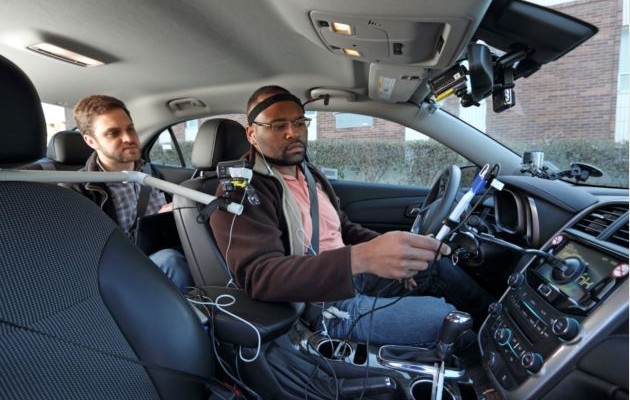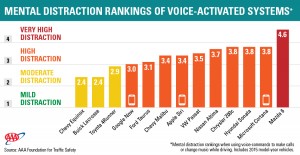
Hands Free Distracts Drivers Long After Hanging Up
November 6, 2015
We’ve written before on the fact that hands free communication devices are no safer or any less distracting for drivers than hand held devices; now there’s evidence that shows they’re still distracting, even after hanging up.
A new study conducted by the University of Utah for the AAA Foundation for Traffic Safety (AAA) shows that it can take up to 27 seconds before the brain can refocus on the task of driving after hanging up on a hands free call or text message. To put that into context, over a period of 27 seconds, a vehicle traveling at just 25 mph will cover approximately 992 feet or the length of three football fields before the driver is able to fully concentrate on the mental task of driving.
The University of Utah conducted two different studies for AAA. The first studied the distraction level of using hands free voice commands to dial phone numbers, call contacts, select music, and send voice texts with Microsoft Cortana, Apple Siri and Google Now. The study showed that, while Google Now was a bit less distracting, all three systems were highly distracting to the drivers.
The second study looked at voice dialing, contact calling, and music selection using in-vehicle “infotainment” systems installed in ten different 2015 model year cars. The study found that three of the systems were moderately distracting, six were rated as highly distracting, and the system installed in the Mazda 6 was found to be very highly distracting.
The tests were conducted using volunteers ranging in age from 21 to 70. The volunteers were accompanied by a researcher as they drove at 25 mph on a 2.7 mile route in a Salt Lake City neighborhood. Each volunteer wore a head mounted device that flashed a red LED light every three to five seconds just to the left of the driver’s vision. Each time they saw the light, drivers would note it using a thumb mounted button. Cameras and other sensors mounted in the vehicle recorded how much time the driver’s eyes were on the road, mirrors, or dashboard. Drivers also participated in a survey to record their perceived attention span during and after the hands free activities. Before conducting the tests, the drivers were allowed to take the car home for a five day period to learn and try to become proficient with the systems.
Most people felt that their full attention was restored after hanging up but the data showed that wasn’t the case. The researchers feel that high tech manufacturers are rolling out the systems too early. There hasn’t been enough time devoted to perfecting the systems and verifying their safety.
Read more: Up to 27 seconds of inattention after talking to your car or smartphone
Photo and graph credits: AAA Foundation for Highway Safety

